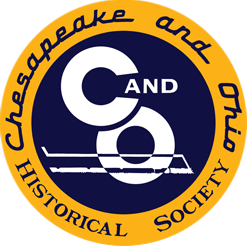

$9.95
Tender Assignments 1940-1953
This pamphlet reprints selected documents issued by the C&O Railway between 1940 and 1953 (probably the last), that show the specific assignment of tenders to steam locomotives.
Each C&O tender had a specific serial number. The number started with a one or two digit numeral indicating the gallons of water the tender held in thousands, followed by a “‘V” if the tender style was Vanderbilt or an “R” if it was rectangular. Following the V or R was a sequential letter assigned chronologically when the tender series was purchased. These prefixes weli then followed by a serial number. Therefore the number 10-RA-901 would mean a 10,000 allon, rectangular tender from the first series in this size purchased, and serial number 901. The serial numbers were not repeated no matter what the prefix letters/numbers were. In this example there
would never be another tender with the 901 serial. This number series appears to have begun in the 1920s or at latest with the advent of the Van Sweringen Roads Advisory Mechanical Committee
in 1930.
Tenders were, for the most part, assigned to locomotives permanently or for long periods, but they could be moved from one to another within a class, or tenders could be shifter by class to another locomotive class, or even transferred individually between classes. To keep all this straight the C&O mechanical department issued periodic memoranda with rosters showing all locomotive by number and class and the specific tender each one was assigned as of that date. Several of those are included in this pamphlet.
Data on tender assignments can also be obtained by looking at locomotive mechanical diagrams. Samples of two diagrams showing this are included directly behind this page in this pamphlet.
The user will have to excuse any lack of legibility resulting from the direct reprint of documents that are not entirely or perfectly clear in their original state.
63 pg.
Tender Assignments 1940-1953
This pamphlet reprints selected documents issued by the C&O Railway between 1940 and 1953 (probably the last), that show the specific assignment of tenders to steam locomotives.
Each C&O tender had a specific serial number. The number started with a one or two digit numeral indicating the gallons of water the tender held in thousands, followed by a “‘V” if the tender style was Vanderbilt or an “R” if it was rectangular. Following the V or R was a sequential letter assigned chronologically when the tender series was purchased. These prefixes weli then followed by a serial number. Therefore the number 10-RA-901 would mean a 10,000 allon, rectangular tender from the first series in this size purchased, and serial number 901. The serial numbers were not repeated no matter what the prefix letters/numbers were. In this example there
would never be another tender with the 901 serial. This number series appears to have begun in the 1920s or at latest with the advent of the Van Sweringen Roads Advisory Mechanical Committee
in 1930.
Tenders were, for the most part, assigned to locomotives permanently or for long periods, but they could be moved from one to another within a class, or tenders could be shifter by class to another locomotive class, or even transferred individually between classes. To keep all this straight the C&O mechanical department issued periodic memoranda with rosters showing all locomotive by number and class and the specific tender each one was assigned as of that date. Several of those are included in this pamphlet.
Data on tender assignments can also be obtained by looking at locomotive mechanical diagrams. Samples of two diagrams showing this are included directly behind this page in this pamphlet.
The user will have to excuse any lack of legibility resulting from the direct reprint of documents that are not entirely or perfectly clear in their original state.
63 pg.
| Media type | Printed, CD |
|---|
| Availability |
Now available in-store at 312 E. Ridgeway St Clifton Forge 24422 Powered With Oliver Pos |
|---|
